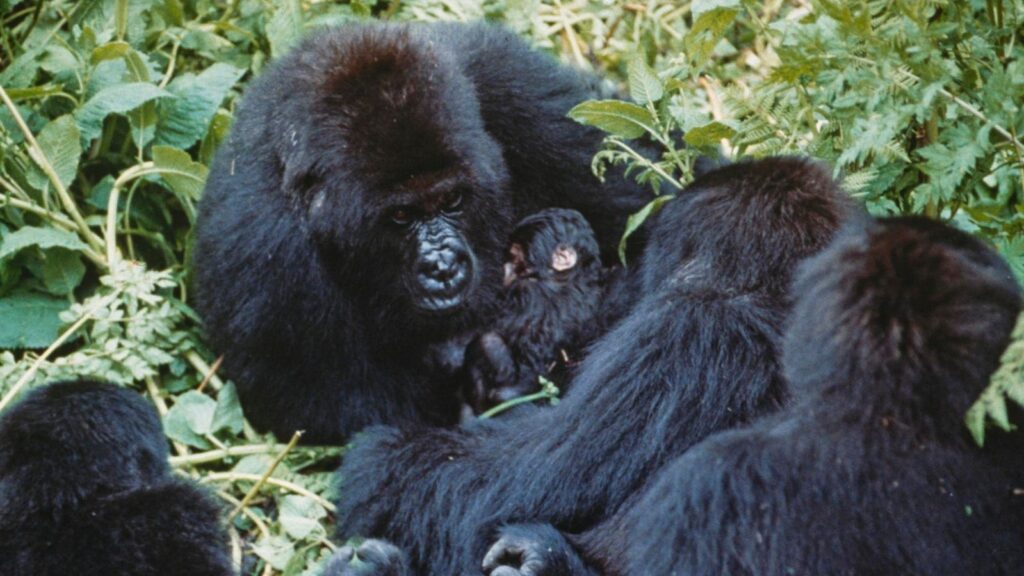In recent years, the discourse surrounding financial inclusion has expanded to consider a rather unconventional demographic: animals. A groundbreaking initiative involving a family of 19 mountain gorillas in Rwanda is at the forefront of this intriguing concept known as “interspecies money.” Instead of assigning traditional financial resources to these animals, the program utilizes advanced technology such as sensors and artificial intelligence to address their needs. By creating a system that connects gorillas with nearby humans, the project aims to facilitate a payment structure where gorillas can effectively “employ” people to perform necessary tasks, such as removing poacher snares—ultimately enhancing their survival in the wild. This innovative approach marks an evolution in thinking about animal welfare and financial autonomy.
At the heart of this initiative is a unique payment system that resembles, yet diverges from, conventional peer-to-peer transactions. Rather than a direct person-to-person financial interaction, this model operates as a P2A2P system, meaning “person-to-animal-to-person.” This complicated structure raises critical questions surrounding the practicality and security of such transactions. While the idea of giving gorillas financial tools may initially seem absurd, especially when considering their habitat in areas with limited mobile connectivity, a custodial wallet approach is being considered. The focus here would be on the animals’ needs and the role of technology in facilitating their welfare, rather than expecting the gorillas to independently manage financial resources.
One might wonder about the feasibility of interaction and validation in this type of transaction, especially given the cognitive limitations of gorillas. Traditional PIN systems would likely be impractical, but there are promising developments in facial recognition technology that could enable more sophisticated authentication methods for the gorillas. Presently, systems capable of identifying various primate species—including gorillas—are already achieving impressive accuracy rates. The potential to create a GorillaID system that employs advanced algorithms for identification could lead to secure and efficient payments for the animals, similar to how facial recognition is leveraged in human banking.
The intersection of animal biometrics and financial technology is gaining traction, not just with gorillas but across different species. For instance, facial recognition technologies are being developed for livestock, such as cows and pigs, to enhance agricultural productivity by monitoring their behavior and health. Precision Livestock Farming (PLF) is an emerging field that combines artificial intelligence, machine learning, and deep learning technologies to track and improve the well-being of farm animals. The implications of these advancements spotlight a burgeoning market where animals’ identities could become integral to their management and care, unveiling new financial opportunities for developers.
Moreover, the exploration of animal identities extends beyond payment systems. Identifying and tracking individual animals using biometric markers is a well-established practice that can improve animal welfare. Technologies capitalizing on various biometric traits, from facial features to nasal prints in dogs, indicate the increasing viability of personalized animal identification solutions. This progress inherently carries potential commercial prospects for fintech innovations targeted at animal welfare, thereby crossing an intriguing boundary between technology, finance, and biological research.
In conclusion, the concept of digital identity and financial inclusion in the animal kingdom presents fascinating propositions. The ongoing developments in animal biometrics and AI open avenues for creating unique identification systems that cater to non-human entities while promoting their welfare. As the intersection of technology and animal management progresses, it becomes crucial for stakeholders in the digital identity space to broaden their perspectives, recognizing the importance of establishing frameworks that support diverse forms of life. This evolving narrative encourages reflection on the nature of identity itself, reminding us that it transcends human and corporate boundaries, potentially redefining our understanding of economic value in the process.

